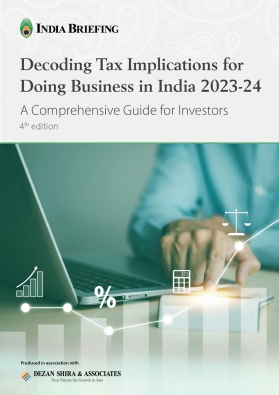Understanding How the UK’s Withdrawal of GSP Concessions Will Impact Indian Exporters
Indian exports to the UK are set to be impacted by changes to duty concessions under the new DCTS system as London withdraws the GSP scheme.
Effective June 19, 2023, the United Kingdom (UK) has implemented the Developing Countries Trading Scheme (DCTS) to replace the previous Generalized Scheme of Preferences (GSP). As a consequence, India, which was previously included in the General Framework of the GSP, has now been placed in the ‘Standard Preference List’. This change has resulted in certain products losing their preferential duty status.
However, there is a possibility that the exclusion of these goods may be temporary, as India and the UK are currently in negotiations for a free trade agreement (FTA). The Indian government is actively advocating for reduced duty access – specifically for textiles and leather goods – under this proposed FTA.
This shift from GSP to DCTS will have a significant impact on Indian exporters, particularly labor-intensive sectors, such as leather and textiles. As a result of the UK’s new DCTS, Indian goods valued at US$960 million will no longer have access to concessional duty rates, which were available under the GSP.
What is the UK’s new DCTS scheme?
The DCTS policy aims to provide non-reciprocal trade preferences to low and lower-middle income countries without trade agreements with the UK, offering lower tariffs compared to the UK Global Tariff. The objective is to promote the growth of poorer economies by facilitating their access to UK markets while protecting them from the challenges of heightened import competition associated with bilateral agreements.
The DCTS comprises three sub-schemes with varying degrees of preferential market access:
- Standard preferences (SP): This sub-scheme replaces the GSP General Framework (GF) and grants partial or complete removal of tariffs on approximately 80 percent of tariff lines.
- Enhanced preferences (EP): This sub-scheme replaces the GSP Enhanced Framework (EF). It extends preferences to around 83 percent of tariff lines and provides zero duties on almost all of them.
- Comprehensive preferences (CP): This sub-scheme replaces the GSP Least Developed Countries Framework (LDCF) and offers zero duties on all tariff lines except for arms and ammunition. It is accessible to 47 least developed countries (LDCs).
Membership in the sub-schemes is distributed as follows: two countries (India and Indonesia) have access to standard preferences, 16 countries have access to enhanced preferences, and 47 LDCs have access to comprehensive preferences.
It must be noted that as India is not classified as a Least Developed Countries (LDC), its exports will be treated under standard preferences rather than enhanced preferences like LDCs.
The tariff schedules of the sub-schemes have undergone minor changes, with the number of eligible tariff lines remaining the same. However, the new scheme offers zero applied tariffs on 33 additional lines compared to the GSP General Framework. The enhanced preferences sub-scheme includes 156 additional tariff lines, out of which 132 benefit from zero-duty access. Some seasonal duty tariff lines have been simplified and fully liberalized under the standard preferences and enhanced preferences sub-schemes.
It is important to note that there is significant overlap between the zero-duty tariff lines in the GSP/DCTS and those in the UK Global Tariff. Approximately two-thirds of the tariff lines with zero duties in the Standard DCTS are also zero-duty in the UK Global Tariff, resulting in no preferential treatment in practice.
How is DCTS different from the GSP?
The GSP scheme offered preferential tariff rates on a wide range of products exported from developing countries to the UK. This meant that Indian exporters could benefit from lower tariffs, which made their products more competitive in the UK market.
The DCTS is a more restrictive scheme, that only applies to a limited range of products. This means that Indian exporters will no longer be able to benefit from the same level of preferential tariffs on their exports to the UK. As a result, their products are likely to become less competitive in the UK market, which could lead to a decline in exports.
Which sectors of Indian exports might be affected by this change?
In all, there are 19 chapters in the tariff schedule under which goods have been subjected to the “graduation” formula from India.
Labor-intensive sectors, such as leather and textiles, along with certain textile items, leather goods, carpets, iron and steel goods, and chemicals, could potentially face the impact of the withdrawal of GSP concessions.
Certain sectors, including metals, are expected to continue enjoying the benefits of the GSP scheme.
However, as per the UK government, goods being transported or stored in a customs warehouse will qualify for the benefits of the GSP. But the proof of origin certificate must be issued before June 19, 2023, to be eligible for these benefits.
|
Products facing preferential duty suspension |
|
Is India the only country affected by the UK’s withdrawal of GSP concessions?
No, there are many other countries like Bangladesh, Cambodia, Myanmar, Nepal, Pakistan, the Philippines, and Sri Lanka that will be affected by this change of scheme.
(With additional research inputs from Naina Bhardwaj.)
About Us
India Briefing is produced by Dezan Shira & Associates. The firm assists foreign investors throughout Asia from offices across the world, including in Delhi and Mumbai. Readers may write to india@dezshira.com for more support on doing business in India.
We also maintain offices or have alliance partners assisting foreign investors in Indonesia, Singapore, Vietnam, Philippines, Malaysia, Thailand, Italy, Germany, and the United States, in addition to practices in Bangladesh and Russia.
- Previous Article Investing in India’s IT Sector: Opportunities for Foreign Companies
- Next Article India-US Ties 2023: Modi Trip Refocuses Attention to Trade, Tech, Defense








